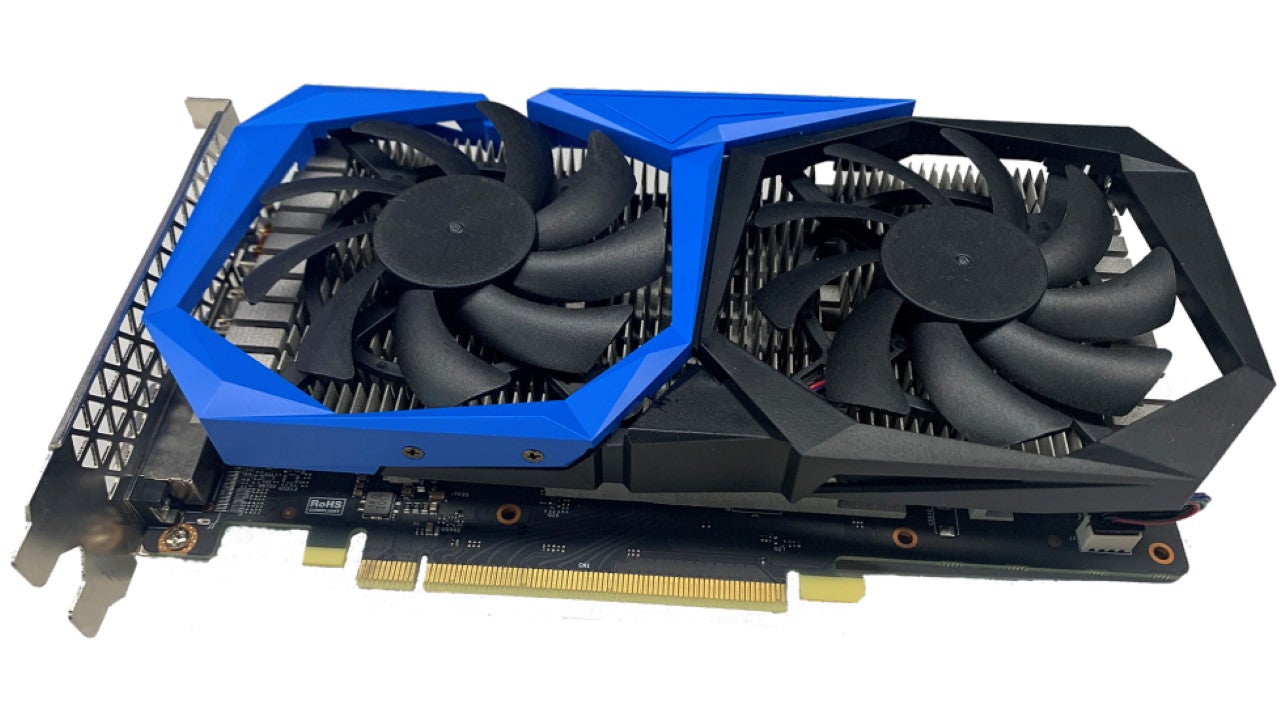I’ve been looking forward to the launch of Intel’s Xe GPUs ever since we got our first glimpse of them at CES 2020. Back then, it was Intel’s DG1 prototype that took centre stage, and today’s initial crop of Iris Xe graphics cards are based off that very same design. Outwardly, they look quite different from Intel’s first prototype. So far, two models have been confirmed: the one shown up top there, which has been made by Asus, and another altogether bluer version pictured below made by Colorful. It’s not yet clear whether we’ll see more manufacturers launch their own Iris Xe cards in the coming months, but given the current shortages of PC hardware in general right now, it’s hardly surprising that Intel are starting off small rather making a big splash. It looks to be a fairly modest launch all round, as Intel say their first pair of Iris Xe graphics cards will come with just 4GB of memory, putting them very much at the lower-end of the graphics card spectrum. They’ll also have 80 execution units (Intel’s equivalent of Nvidia’s CUDA cores and AMD’s stream processors), which is actually a little bit below the top 96 EU spec that Intel previously outlined as part of their over-arching Xe-LP (or low power) micro architecture. As for the rest of their specs, details are still thin on the ground at the moment. Indeed, the only other pieces of information Intel have confirmed so far is that the cards will have three display outputs, as well as support for hardware video decode and encode accerlation (including AV1 decode support), adaptive sync and Display HDR. They’ll also have some degree of AI capability thanks to Intel’s DP4a deep-learning inference tech, but otherwise that’s your lot. We don’t know when these Xe-powered OEM systems will begin to go on sale yet, either, but I imagine we’ll see them cropping up over the next couple of months as system builders start to get their shipments through. I’ll be interested to see exactly what kind of PCs they end up in as well. Intel say they’re currently targeting “mainstream users and small- and medium-size businesses” with these first two Iris Xe cards, but with so little information to go on right now it’s hard to say whether they’ll be proper competitors to other low-end GPUs, such as Nvidia’s GeForce GTX 1650 or AMD’s Radeon RX 5500 XT. We’ll just have to wait and see.
